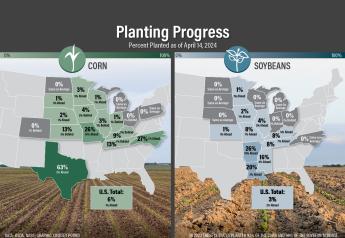Court Orders EPA To Cancel All Registrations For Chlorpyrifos

A year after another court denied a petition to ban chlorpyrifos, the 9th Circuit Court of Appeals has released its decision ordering the EPA to cancel all registrations for chlorpyrifos in the next 60 days.
Jay Vroom, CEO of CropLife America released the following statement: "We are disappointed by today’s decision by the Ninth Circuit Court, ordering EPA to “…cancel all registrations for Chlorpyrifos within 60 days.” We hope that after review of the decision EPA will consider all avenues of appeal. We continue to support growers and to work with them to ensure they have the tools needed to continue producing safe and affordable food."
Chlorpyrifos has recently been in the regulatory spotlight since 2015, when the EPA proposed a ban on the chemical. At the core of this recent debate has been pesticide residue on food crops. This latest decision pivoted on the difference between “significant uncertainty” and “reasonable certainty.”
As AgriPulse reports, EPA had proposed to ban food tolerances for the chemical, but in March 2017 EPA administrator Scott Pruitt issued an order, which "declined to revoke chlorpyrifos tolerances but did not make a finding of reasonable certainty that the tolerances were safe," as required by Federal Food, Drug & Cosmetic Act (FFDCA), the court said. "Instead, (EPA) found 'significant uncertainty' as to the health effects of chlorpyrifos, which is at odds with a finding of 'reasonable certainty' of safety" under the FFDCA.
Gregg Schmidt with Corteva Agriscience provided this statement, "Chlorpyrifos is a critical pest management tool used by growers around the world to manage a large number of pests, and regulatory bodies in 79 countries have looked at the science, carefully evaluated the product and its significant benefits and continued to approve its use. We note that this was a split decision of the panel and we agree with the dissenting judge’s opinion. We expect that all appellate options to challenge the majority’s decision will be considered. We will continue to support the growers who need this important product."
In late March, EPA ruled it will not ban the pesticide. That resulted in five states suing the EPA.
In June, Hawaii became the first state to ban chlorpyrifos. In late July, a state agency in California was starting to apply stricter regulations on the chemical.
Nationally chlorpyrifos is found in products registered by about 20 different companies, including being sold under the trade name Lorsban by Corteva Agrisciences.







